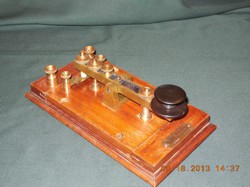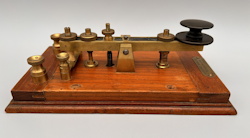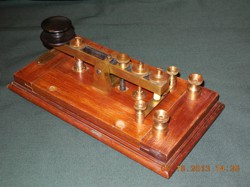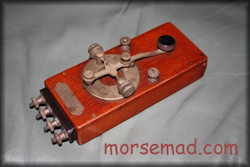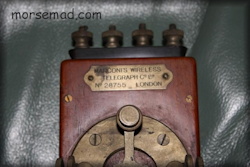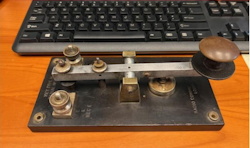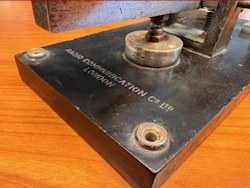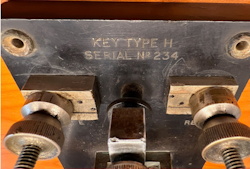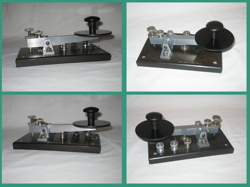British Spark Keys
(Click on the pictures below to see larger versions of the photo)
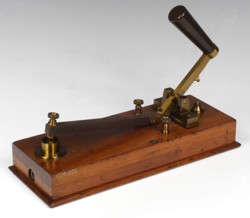 |
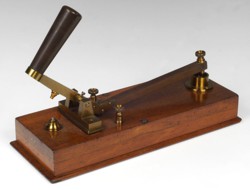 |
Marconi's first telegraph key, nicknamed the "Grasshopper Key". Very rare, only 2 or 3 genuine examples known. However, some very nice reproductions are available to collectors. |
|---|
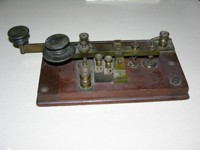 |
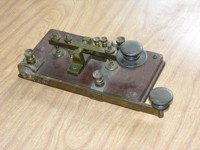 |
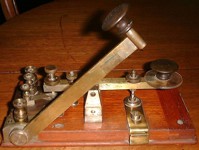 |
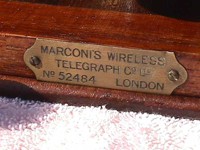 |
This is probably Marconi's most famous telegraph key, nicknamed the "Guillotine Key" because of the side lever, which is used to short out the receiver to protect it during transmit. This is the same type of key that was used in the shipboard wireless station on the Titanic. Also note the engraved label, which is typical of those used on early Marconi Wireless instrument.
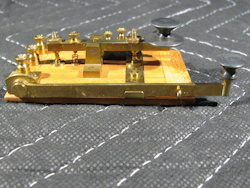 |
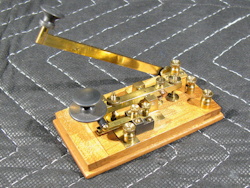 |
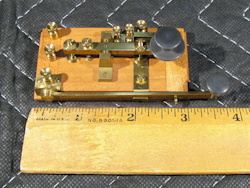 |
A modern miniature copy of the Marconi Guillotine Key |
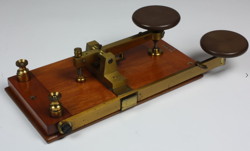 |
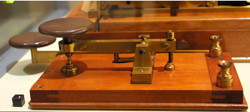 |
A later version of the Marconi Guillotine Key, used on Australian landline systems (Museum Victoria, Melbourne). |
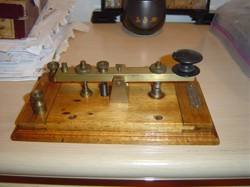 |
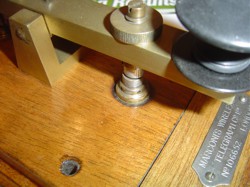 |
An early Marconi Wireless key that came from Australia. Note the burn marks around the front contact indicating heavy use at high currents. |
|---|
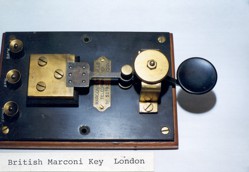 |
An unusual early Marconi key with leaf spring pivot. (Gil Schlehman K9WDY Collection) |
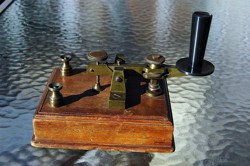 |
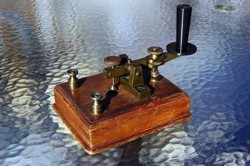 |
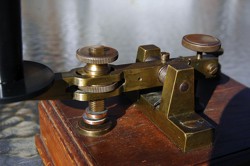 |
Another unusual Marconi Wireless key mounted on a wooden box. Note the adjustable, replaceable upper contact. |
|---|
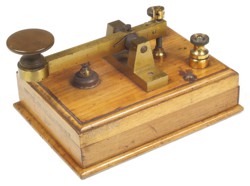 |
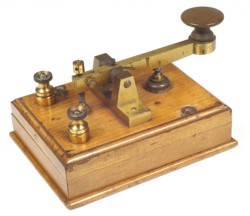 |
A different version Marconi box-mounted key with smaller contacts. |
|---|
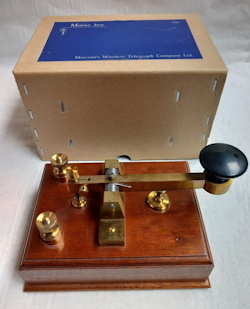 |
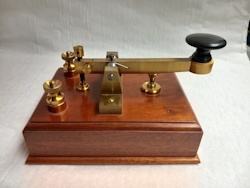 |
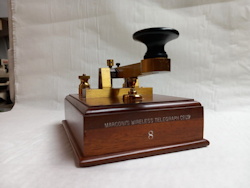 |
A beautiful replica of the Marconi box-mounted spark key made by Phil Boyle, G0NVT |
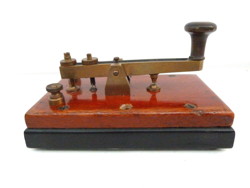 |
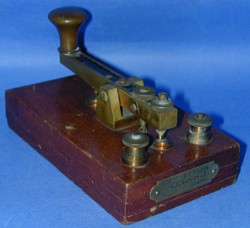 |
An early Marconi Wireless key for lower currents. Mounted on a hollow wooden base which usually contained a large filter capacitor. |
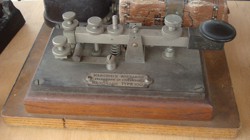 |
Marconi Wireless Type 100. |
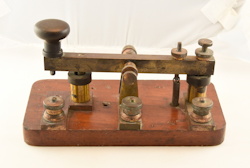 |
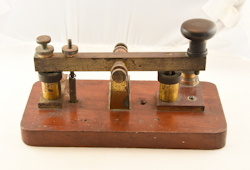 |
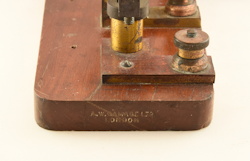 |
A very unusual BRITISH Oil-Break Key by A.W. Gamage, London. |
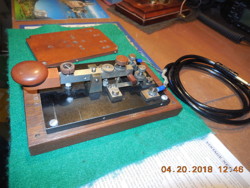 |
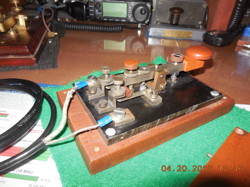 |
Siemens Model SB-43. Similar design to the Marconi Type 100 |
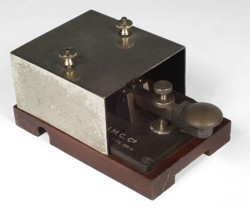 |
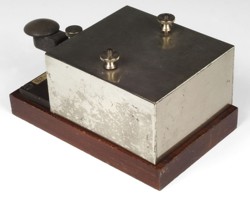 |
A later version of the Marconi Type 100 on bakelite base and metal cover. |
|---|
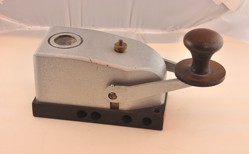 |
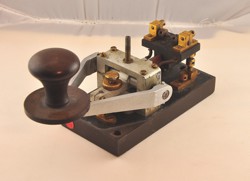 |
An airplane wireless key by S.G. Brown. Produced a spark between the contacts at the top rear of the key, which could be seen by the pilot through the small mica window on the top of the metal cover. |
 |
A large wireless key by S.G. Brown with a crystal detector at the rear of the key. |
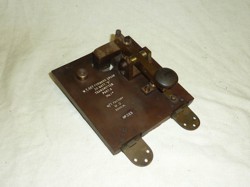 |
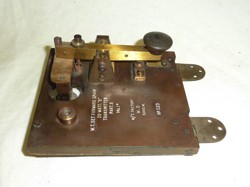 |
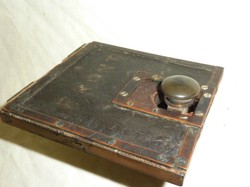 |
|---|
An unusual telegraph key, part of a British 20 Watt spark transmitter set. Note that the key is actually double sided and can be operated with the mounting panel open or closed.
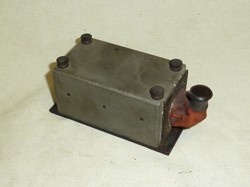 |
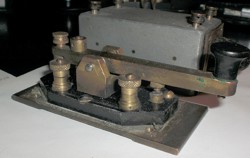 |
Another British airplane wireless key with gasket around the lever to seal it from gas fumes. |

